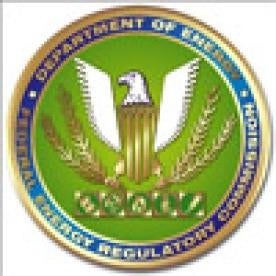The clarifications address concerns from market participants but leave some questions unanswered.
On May 19, the Federal Energy Regulatory Commission (FERC or the Commission) issued Order No. 816-A, which upholds and clarifies the Commission’s reforms to its market-based rate (MBR) program issued in Order No. 816 on October 16, 2015.[1] Order No. 816 streamlined a number of requirements for MBR filings, such as those related to horizontal market power wholesale market share and pivotal supplier indicative screens, and the asset appendices required of each MBR applicant. In upholding the prior reforms, the Commission addressed requests for rehearing from various entities, some of which concerned the following topics: reporting obligations for fully committed long-term generation capacity, reporting of long-term firm purchases, notices of change in status, new affiliation and behind-the-meter generation, waiver of Part 101 of the Commission’s regulations, and corporate organizational charts. We discuss the clarifications on these issues in further detail below.
Clarifications
-
Reporting Obligations for Fully Committed Long-Term Capacity: In Order No. 816, the Commission permitted filing entities to exclude from horizontal market power analyses any capacity that is fully committed for long-term firm sale to unaffiliated purchasers, so long as those sellers provided the expiration date of the long-term contracts for the relevant capacity. On rehearing, the Commission denied challenges to the necessity of such information. By knowing the expiration date of the long-term contracts, the Commission stated that it would be able to verify MBR sellers’ prior market power information to support an ex ante market power analysis.
-
Long-Term Firm Purchases: The Commission affirmed the requirement that filing entities must report all long-term firm energy and capacity purchases from generators within a regional transmission organization (RTO) or independent system operator (ISO) market if that generation is designated to have capacity obligations. However, the Commission clarified that this reporting requirement does not apply to purchases from a qualifying facility (QF) exempt from Section 205 of the Federal Power Act (FPA).
-
Change in Status Notices: In Order No. 816, the Commission narrowed a prior requirement that MBR sellers file a change in status for any newly affiliated generation above 100 MW by limiting that requirement to only the MBR seller’s relevant geographic area. In other words, MBR sellers no longer need to incorporate new generation, including generation from long-term purchase agreements, in adjacent or "first-tier" market areas when calculating the 100 MW. On rehearing, the Commission clarified the factors that may affect whether new generation would cause an MBR seller to exceed the 100 MW threshold. Specifically, the Commission explained that the relevant geographic market for purposes of calculating new generation depends on whether an MBR seller is a power producer or a power marketer, whether the seller owns transmission or is interconnected to an affiliated transmission system, and whether the seller’s generation is in an RTO/ISO. The Commission also denied a request to include capacity in first-tier market areas for purposes of determining the 100 MW change in status threshold.
-
Behind-the-Meter Generation: The Commission confirmed that filing entities and MBR sellers are not required to include behind-the-meter generation in certain MBR reporting requirements: the 100 MW change in status threshold, the 500 MW Category 1 seller status threshold, and the asset appendices and indicative screens. The Commission reiterated its rationale that behind-the-meter generation not sold into the wholesale market is not relevant to the Commission’s market power analysis, and that otherwise, the burden of reporting such generation that is available for wholesale sales outweighs the benefits.
-
Uniform System of Accounts for Hydropower Licensees: The Commission clarified that a hydropower licensee that otherwise sells power only at market-based rates will not be subject to the full requirements of the Uniform System of Accounts (USofA) under Part 101 of the Commission’s regulations, 18 C.F.R. Part 101, as a consequence of filing a cost-based reactive power tariff. However, hydropower licensees that have Commission-approved, cost-based rates must continue to comply with the USofA. The Commission also cautioned that accounting waivers will be rescinded where a seller is found to have market power and becomes subject to cost-based rate mitigation. The Commission’s treatment of this issue suggests that a public utility that is a hydropower licensee holding a USofA waiver that faces any potential loss of its MBR authority (such as an expansion of its statistical market presence resulting from acquisitions and/or new project development by affiliates) should be prepared to become subject to USofA reporting, absent some other basis for immunity from USofA reporting (such as qualifying facility status that can provide this immunity under the Commission’s qualifying facility regulations).[2]
-
Corporate Organizational Chart: In Order No. 816, the Commission adopted the proposal to require a filing entity to include a corporate organizational chart when filing an initial application for MBR authority, an updated market power analysis, or, in some circumstances, a notice of change in status reporting new affiliations. The Commission has granted filing entities a waiver of this requirement[3], and Order No. 816-A continues this waiver, noting that a compliance deadline will be addressed in a later order. The Commission also notes that other related organizational disclosure obligations are under consideration in the Commission’s rulemaking proceedings on the collection of ownership information in MBR filings[4] and the collection of market participants “Connected Entity” information from RTOs and ISOs.[5]
Implications and Outstanding Questions
As noted above, the Commission largely upheld the reforms in Order No. 816, mostly opting to clarify concerns from various market participants. However, some questions remain for MBR entities. For example, it remains unclear how filing entities must account for QF generation. Order No. 816-A declares that a qualifying facility that is immune from FERC rate regulation under the FPA need not be considered by an MBR seller in its affiliate asset disclosure, and similarly can be excluded from an MBR seller’s statistical market power studies, but also explicitly directs that an MBR seller must disclose and consider “…all of its generation assets…” A number of MBR sellers have continued to report all of their affiliated generation, including qualifying facilities, as a simplifying assumption, and Order No. 816-A does not indicate that the Commission would no longer permit this approach.
[1] Refinements to Policies and Procedures for Market-Based Rates for Wholesale Sales of Electric Energy, Capacity and Ancillary Services by Public Utilities, Order No. 816, 153 FERC ¶ 61,065 (2015), order on reh’g and clarification, Order No. 816-A, 155 FERC ¶ 61,188 (2016).
[2] 18 C.F.R. § 292.601(c).
[3] See Refinements to Policies and Procedures for Market-Based Rates for Wholesale Sales of Electric Energy, Capacity and Ancillary Services by Public Utilities, 153 FERC ¶ 61,337 (2015).
[4] Notice of Proposed Rulemaking, Ownership Information in Market-Based Rate Filings, 153 FERC ¶ 61,309 (2015).
[5] Notice of Proposed Rulemaking, Collection of Connected Entity Data from Regional Transmission Organizations and Independent System Operators, 152 FERC ¶ 61,219 (2015).




 i
i


